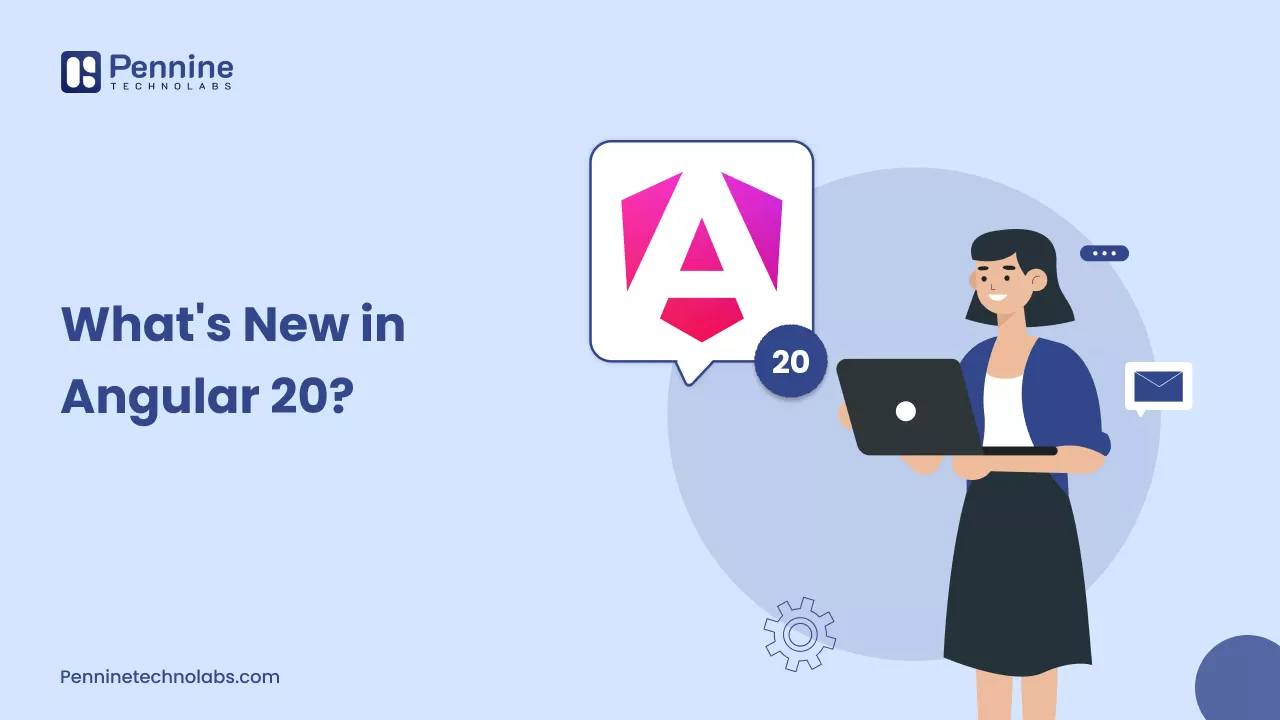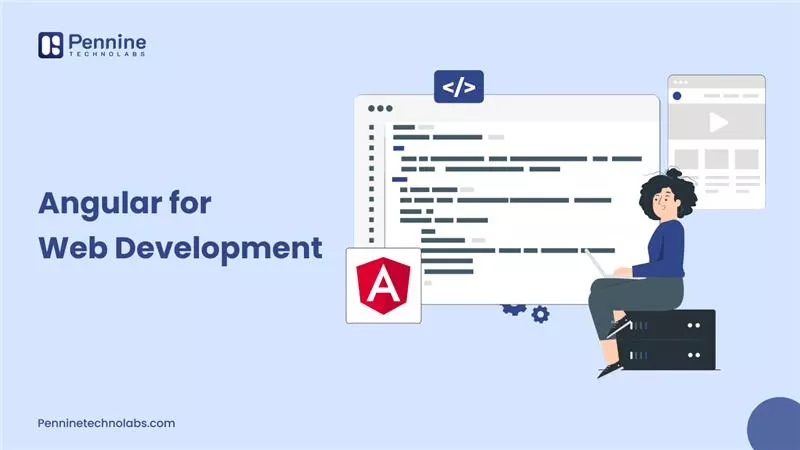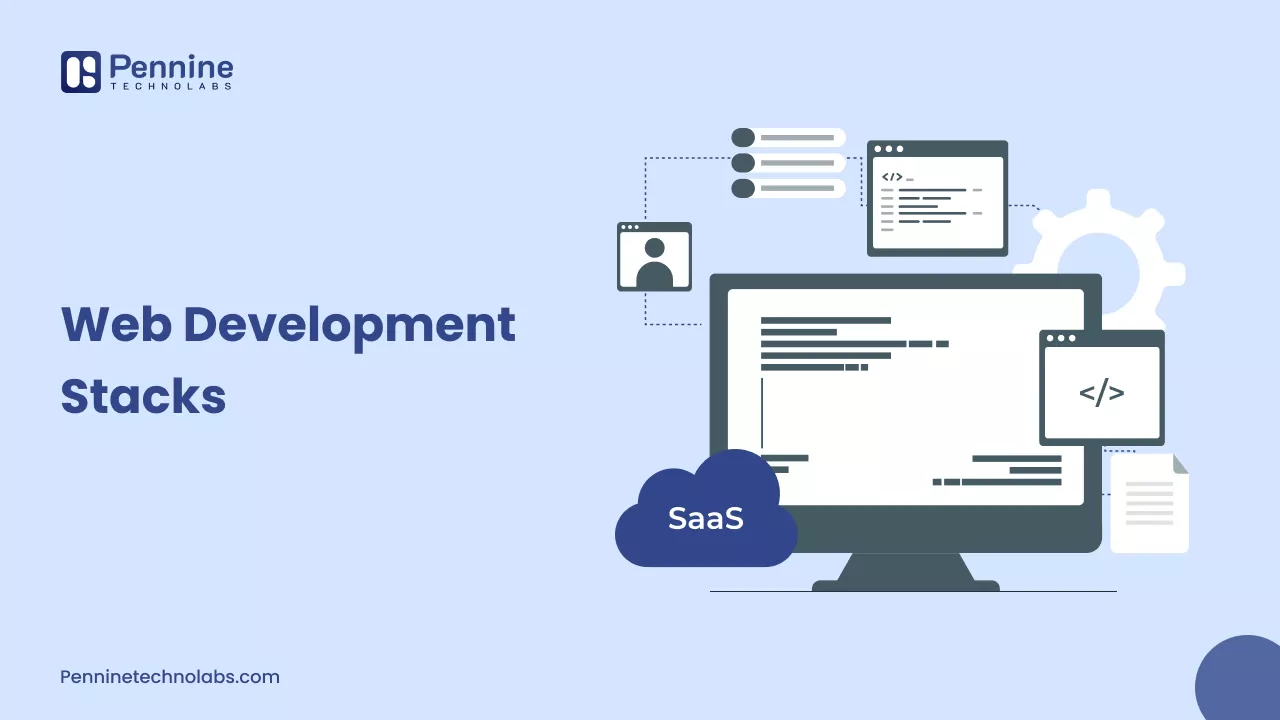Quick Summary: Angular 20 stable signs, new control flow syntax, extended diagnosis, simplified configuration, and better testing APIs introduce powerful upgrades. It focuses on developer productivity, better code, and performance. While some characteristics, such as zone-less mode, remain experimental, Angular 20 determines a solid base for modern, scalable front-end development.
Angular continues to develop as one of the strongest and most enterprise-ready front-end frameworks. With the release of Angular 20, it takes a significant jump towards modern web development by focusing on performance, reactivity, and developer experience. The version introduces many long-awaited improvements.
Whether you are creating large-scale web applications or looking to modernize existing projects, Angular 20 provides these tools and flexibility to make it much faster and cleaner than ever. Let’s dive into Angular Version 20 to make a release worth your attention.
What is Angular 20?
Angular 20, released on May 25, 2025, brings a modern upgrade to one of the most widely used front-end frameworks. With stable signals, better control flow, extended diagnostics, and better performance, it simplifies release development and increases scalability. Here, you’ll find everything you need to know about the most essential Angular 20 new features.
Angular 20 Key Features and Updates
1. Stable Control Flow Syntax
AngularJS latest version introduces stable @if, @for, and @switch syntax, replacing functional structural instructions. It improves readability, reduces template nesting, and aligns Angular’s syntax with modern frameworks, making it easier for web developers to write and manage logic-heavy UI structures with less code.
2. Signals Are Now Fully Stable
Angular Signals are now stable and offer a predicted, fine reactive system. They eliminate the need to detect manual changes, making state updates automated and efficient. Stable Angular signals simplify state management and enhance performance, especially in dynamic and interactive applications.
3. Built-in for Signals
Angular 20 involves a native debounce() utility for signals, allowing delayed updates for performance-ready tasks such as input handling or API calls. It reduces unnecessary rendering and improves user experience, especially in reactive forms and search areas.
4. Zone-less Bootstrapping (Experimental)
Angular now supports experimental bootstrapping without zone.js. Bootstrapping reveals lean bundles and rapid changes as a result. It also enables more predetermined rendering behavior, especially beneficial for people with enterprise-grade apps, microfrontends, or those with strict performance control.
5. Signal Debugging in DevTools
Angular DevTools now supports signal debugging, allowing developers to observe the reactive state, watch the dependency graphs, and detect changes. DevTools make debugging smooth and help teams better understand how UI updates are triggered and what causes the state shift.
6. TypeScript 5.5 Support
Angular 20 supports TypeScript 5.5; the compilation improves speed and editor experience. Website Developers benefit from new syntax capabilities, increased IntelliSense, and better estimates, making development workflow more efficient and future-ready.
7. Simplified Testing APIs
Testing APIs is now faster and less complex with improvements in TestBed and new APIs such as runInInjectionContext(). These changes reduce boilerplates and make high-quality tests easy to write and maintain, especially in large projects.
8. Built-in View Transitions (Experimental)
The Angular 20 native browser introduces experimental support for View Transitions. The underlying feature enables smooth animation between pages or components, enhancing the UX without the need for a custom animation library or complex transition logic.
9. Extended Template Diagnostics
Angular now provides extended diagnosis to detect general template issues such as unused variables, incorrect binding, or disabled expressions. These warning improves the quality of the code and help developers catch early errors in development.
10. Improved Error Handling
The error messages in Angular 20 are more descriptive and actionable. During compilation or runtime, Angular helps address the issue to improve the developer experience and reduce debugging time.
11. Simplified Angular.json Configuration
The angular.json file cleaner is worth maintaining. Angular 20 trims unnecessary configuration fields, simplifies the structure, and improves omissions while managing large workspaces, or makes it easy for new team members to onboard.
12. Scroll Position Restoration
The new update provides better scroll handling, including automatic restoration of the scroll position during routing. Position Restoration enhances navigation in SPAs and content-heavy sites by maintaining the user’s context and improving overall purposes.
Angular 18 vs 19 vs 20: Feature Comparison
Get an overview of the most trending frontend frameworks with Angular 18, Angular 19, and Angular 20. The latest version of Angular brings you the best features to upgrade your web application and grow your business.
| Feature | Angular 18 | Angular 19 | Angular 20 |
|---|---|---|---|
| Control Flow (@if, @for) | Not available | Developer preview | Stable |
| Signals | Experimental | Developer preview | Stable |
| Signal Debugging | Not available | Not available | Available |
| View Transitions | Not available | Not available | Experimental |
| Zone-less Mode | Not available | Not available | Experimental |
| TypeScript Support | 5.2 | 5.3 | 5.5 |
| Extended Diagnostics | Limited | Improved | Enhanced |
| Testing APIs | Basic | Refined | Simplified |
Why Upgrade to Angular 20
Upgrade to Angular 20 means better performance, cleaner code, and a more developer-friendly experience. With stable signals and simplified tests, large applications become easy to manage. Reducing the time and bugs of development in dealing with extended diagnosis and better error handling. For future-proof apps, Angular 20 update is a smart step, and it’s better to adapt at an early stage.
Angular Framework Updates 2025
Angular 20 update was released in September 2025, as a part of the biennial update cycle.
The latest Angular 20 version introduces server-side rendering, rapid construction time and enlarged developer for better hypothesis in ergonomics.
It supports strong TypeScript 5.6, which increased the types of estimates and the strictness of checks.
Angular 20 signals update to API for more fine-grained reactivity and better developer experience.
With the extended standalone component as the default standard, it depends less on the NGModules.
Migration Steps to Angular 20
- Run ng update @angular/cli @angular/core
- Upgrade to TypeScript 5.5
- Refactor templates using @if and @for
- Begin integrating signals gradually
- Review and simplify angular.json
- Use new testing APIs to clean up test files.
- Enable View Transitions and scroll behavior if needed
Challenges in Angular 20
1. Migration Complexity
Upgrade from old Angular versions can be time-consuming, especially when refactoring deprecated syntax and modules. Legacy apps may require significant changes.
2. Learning Curve for Signals and Syntax
Developers have to learn the new signal API and @if/@for syntax, which differ from the traditional pattern of Angular. This change takes time to adapt.
3. Experimental Zone-less Bootstrapping
The zone-less mode is not yet completely stable. Using it can lead to changes in production issues or library incompatibility.
4. Incomplete Ecosystem Support
Some third-party libraries and equipment have not completely adopted angular facilities. A custom patch or temporary decline may be required for integration.
5. Limited Community Examples
New features, such as signals and view transitions, lead to extensive tutorials or proven patterns. Developers may face a lack of real-world references.
Conclusion
Angular 20 is a developer-centric release packed with improvements that modernize the web framework and simplify development. From powerful reactive features to template enhancement and better tooling, this version helps web teams to create scalable, high-performance web applications with low friction. Now, upgrading makes sure to be ahead with the latest equipment and practices.
Pennine Technolabs are constantly ahead of the curve by adopting the latest techniques, delivering real-world impact. Our Frontend Development Team is already implementing the best practices of Angular 20, from building and control flow enhancement to scalable architecture and zone-less experimentation.
Upgrade the existing Angular app or create a modern web platform from scratch. We provide Angular development services to suit your business needs. Partner with Pennine to make Angular 20 possible, improving your applications with future performance, flexibility, and code quality.
FAQs about Angular 20
What are the major features of Angular 20?
Angular 20 features stable signals, new control flow syntax (@if, @for), extended diagnosis, improved DevTools, TypeScript 5.5 support, and simplified test API.
Is it mandatory to use signals in Angular 20?
No, signals are optional but recommended. They provide better performance and cleaner state management, especially for dynamic UI.
Can I use Angular 20 without zone.js?
Yes, Angular 20 zone-less boot provides experimental support for BootStrapping. However, it may not yet be stable for all production scenarios.
Does Angular 20 support TypeScript 5.5?
Yes, the Angular 20 TypeScript is fully compatible with 5.5, offering rapid build, better tooling, and modern syntax support.
Should I upgrade my Angular 18 or 19 apps to Angular 20?
Yes, upgrading has better reactivity, a simple template, and access to tooling improvements. Just review the Changelog and test well before the deployment.
Is Angular 20 stable to use?
Angular 20, released on 28th May, 2025, is the stable and supported version of Angular Framework. With regular updates and support, this version is safe to use and upgrade from the old Angular version.



